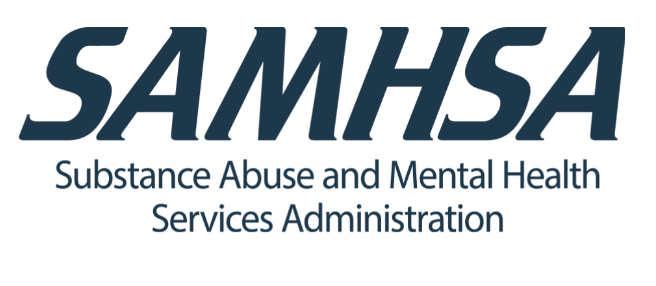What to Expect During Opiate Detox

Drug overdose deaths in the US have been on the rise since 1997 resulting in over 700,000 deaths in the period since. This is according to a CDC report, which goes on to suggest that there is an average of 130 Americans that die from an opioid overdose every day. These are drugs derived from a milky substance in the seedpods of opium poppy flowers. The most commonly abused opiates include morphine, heroin, and codeine. There has also been a rise in synthetic opiate use, like fentanyl, which are man-made substances made to mimic the naturally forming drugs.
Though drug abuse can be fatal, opiate addiction is treatable. It is, however, difficult for users to recover without support. Loved ones play a crucial role as relapses are possible especially when withdrawal symptoms start to kick in. As such, opiate users should be taken for detoxification programs under professional care to get the best chance of recovery.
Signs Indicating Opiate Abuse
Opiates can have adverse effects on normal body functions. They suppress the central nervous system to relieve pain but can also cause harmful side effects when abused. The best way of preventing an addiction is by identifying drug abuse in the early stages. Opiate addiction can be characterized by the following physical and behavioral warning signs:
- Presence of injection marks on the arms and legs
- Peculiar sleeping patterns. The individual may sleep at odd times or have challenges staying awake
- Flushed and itchy skin
- Constricted pupils
- Making rash decisions and taking impulsive actions
- Reduced or complete withdrawal from previously preferred social activities
- Sudden and unwarranted changes in mood that seem to be out of character
- Participating in risky behaviors
Opiate Detoxification
To begin opiate detox, the user must first stop using the drug. Since their body was used to the opiates and became physically dependent on it, they will experience withdrawal which varies depending on the person and how long they have been on the drug. For short-acting opiates, early withdrawal symptoms may start within 6-12 hours whereas it takes up to 30 hours for long-lasting ones. Some of the early signs include:
- Muscle aches
- Anxiety
- Insomnia
- A runny nose
- Sweating
- Yawning
- Agitation
- Fever
- Hypertension
Other symptoms that may start to manifest later on include:
- Pupil dilation
- Nausea
- Vomiting
- Goosebumps
- Abdominal cramping
- Diarrhea
- Depression
- The desire to start reusing drugs
For detox to be successful, long term support and treatment is needed as some of the psychological withdrawal symptoms such as cravings and depression can last longer than a week.
Due to the complications that may arise because of withdrawal, it is better for the process to take place in a facility where all the necessary support structures are available. Generally, the individual will slowly be weaned off the drugs. This is to reduce the effects of sudden and severe withdrawal symptoms.
Components of Opiate Detoxification Programs
1. Evaluation and Diagnostic Testing
The patient will first take several psychological evaluations and physical tests that will dictate the type of treatment they need. To be able to formulate an opiate detox program specifically tailored for the patient, a drug test may be necessary. The drug test will aid in identifying all the drugs in their system that should be considered for detoxification.
Some drugs are notorious for numbing pain. The physical tests will help reveal any injuries that may have resulted from addiction so that they are also treated. Psychological interviews are also necessary to unearth any mental issues that may also need attention.
2. Medical Supervision
To ensure recovery is progressing well, detoxification centers will constantly monitor the health of the patient all through the withdrawal stage. Vital aspects such as body temperature, heart rate, breathing, and blood pressure will be monitored closely. This is important as there are instances where serious complications can arise.
3. Medication
Symptoms of withdrawal are normally treated with nonaddictive painkillers, natural remedies, antidepressants, anxiolytic drugs, sleep medications, and anti-seizure or anti-nausea drugs. If any mental or physical damage is diagnosed, non-addictive medications will be used to treat it. If need be, there are specialized medications designed to prevent withdrawal by reducing cravings.
4. Peer Support and Counseling Sessions
Throughout the detoxification process, there are multiple therapy sessions and group meetings with peers so that they can encourage and motivate one another as they learn from each other. Counseling is important as patients need to understand the physical and mental changes they are experiencing.
5. Physical Conditioning
There are also other methods such as nutritional support, alternative therapies, and exercise used to assist the detoxification process. The aim of using these measures is to enhance energy levels, boost mood, facilitate the release of endorphins and build the base of a healthy future by providing sufficient nutrients.
Types of Detoxification
Detoxification may come in different ways depending on the drug abused, duration of addiction and the patient’s overall health. There are policies on how different drugs should be detoxified while some have varied methods of detoxification. Some of the methods used regularly are:
Natural Detoxification – The idea behind natural detoxification is to allow the patient to overcome withdrawal without the aid of unnecessary medication. This process of overcoming withdrawal helps to prevent a relapse in the future.
Medically supervised detox – This is where detoxification is done in a facility and handled by licensed medical practitioners. Here, the patient’s vital signs are closely monitored in case of an emergency.
Medical detox – This is similar to a medically supervised detox but there is also use of medications aimed at alleviating withdrawal symptoms and reducing cravings.
Rapid detoxification – This involves sedating the patient during the detoxification process. Essentially, they sleep through the withdrawal period and do not experience the challenges it involves. Treatment with targeted medications is used to hasten detoxification. Patients of this method wake up with heightened mental clarity and little to no craving. However, patients should be kept under close supervision as fatal health complications can arise.
Overcoming drug addiction can be quite a challenge. If a loved one exhibits signs of abuse, they need to be accorded the necessary attention and support to help them recover. One cannot walk the path to recovery alone.




